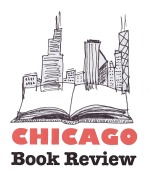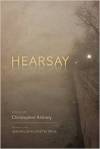 Dozens of book reviews, a bunch of features, previews of local literary events … it’s been another year of all-books-all-the-time here at Chicago Book Review. Earlier this week, we posted CBR’s Best Books 0f 2015, a great complement to another fabulous list we posted this month: Chicago’s Favorite Books of 2015, a collection of a dozen beloved titles as rated by local literati. Both of these lists, and a few others, quickly proved to be among our readers’ favorite posts of the year.
Dozens of book reviews, a bunch of features, previews of local literary events … it’s been another year of all-books-all-the-time here at Chicago Book Review. Earlier this week, we posted CBR’s Best Books 0f 2015, a great complement to another fabulous list we posted this month: Chicago’s Favorite Books of 2015, a collection of a dozen beloved titles as rated by local literati. Both of these lists, and a few others, quickly proved to be among our readers’ favorite posts of the year.
With that, we’re looking at CBR’s Top Posts of 2015, a mix of book reviews and features highlighting the local lit scene—authors, publishers, and organizations doing what they do to support and promote Chicago’s literary community.
That community is a strong one, and we’re grateful to the many authors, publishers, readers, and other literary types who help keep us going. We’re especially grateful to the reviewers who keep CBR active, reviewing dozens of books every year. Chicago Book Review is a labor of love, and we couldn’t do it without our reviewers—or without all the books we receive from local publishers and authors. Together we’re able to bring to readers reviews of books they might not otherwise discover—because Chicago Book Review reviews Chicago’s books.
 During the year, we’ve again been lucky enough to review books from a variety of local and regional publishers, from indie houses and imprints like Ankerwycke, Chicago Review Press, and Dream of Things to large academic houses such as University of Chicago Press, University of Illinois Press, and University of Wisconsin Press. (You can learn more about local and regional houses by exploring the list over there on the left of your screen.) We’ve highlighted organizations such as Chicago Book Expo and Midwestern Gothic. And we’ve reviewed some great books by local authors such as Mary Kubica, Erik Fassnacht, and Robert M. Marovich.
During the year, we’ve again been lucky enough to review books from a variety of local and regional publishers, from indie houses and imprints like Ankerwycke, Chicago Review Press, and Dream of Things to large academic houses such as University of Chicago Press, University of Illinois Press, and University of Wisconsin Press. (You can learn more about local and regional houses by exploring the list over there on the left of your screen.) We’ve highlighted organizations such as Chicago Book Expo and Midwestern Gothic. And we’ve reviewed some great books by local authors such as Mary Kubica, Erik Fassnacht, and Robert M. Marovich.
 We’re grateful to our fans and friends, too, readers from Chicago and the Midwest, as well as across the United States. We also count among our followers readers from around the world—the United Kingdom, Canada, and Australia, as well as Colombia, France, Germany, India, and Italy, the way to Croatia, Georgia, Micronesia, Réunion, and Tunisia.
We’re grateful to our fans and friends, too, readers from Chicago and the Midwest, as well as across the United States. We also count among our followers readers from around the world—the United Kingdom, Canada, and Australia, as well as Colombia, France, Germany, India, and Italy, the way to Croatia, Georgia, Micronesia, Réunion, and Tunisia.
2016 promises to be another year full of great books from local and regional authors and publishers, and we plan to review as many as we can for readers near and far. In the meantime, we close 2015 with a look at the most popular posts of the year, a collection of reviews and features that will give you some great ideas for how to spend those bookstore gift cards you received over the holidays.
- CBR’s Best Books of 2015
- Chicago Book Review’s Summer 2015 Preview
- Brutally Beautiful
- Chicago’s Favorite Books of 2015
- CBR’s Fall 2015 Preview
- You Shall Uphold Him
- Preview: Chicago Book Expo—
‘Something for Every Literary Taste’
- Much More Than Half
- War Must Ensue
- Doorways to the Domestic Scene
 Happy New Year!
Happy New Year!
—and Happy Reading!
Cheers!

















